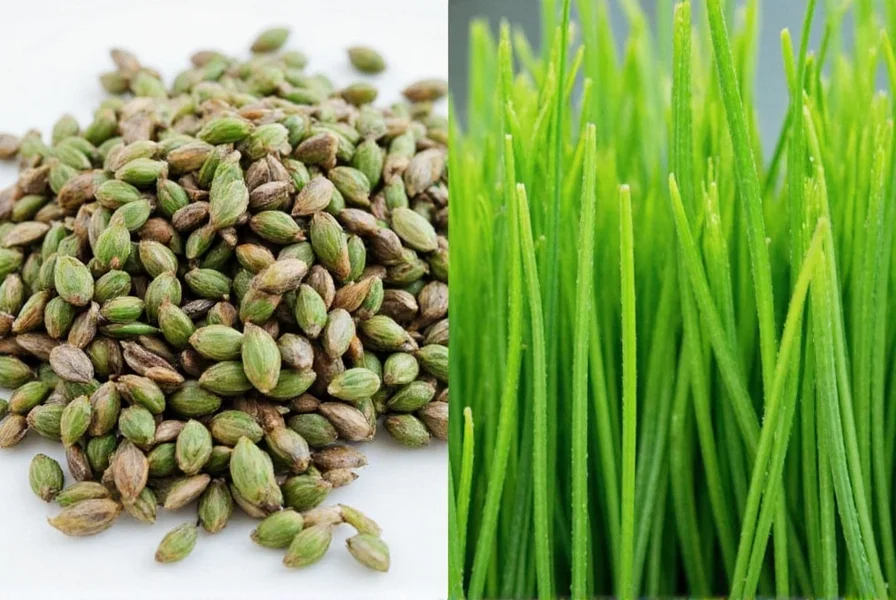Choosing between dried and fresh chives depends on your cooking needs: fresh for garnishes and raw dishes where color and crisp texture matter, dried for cooked meals requiring long shelf life and concentrated flavor. This guide covers everything you need to know to make the right choice for any recipe.
Chives — those delicate, grassy green strands — are a staple in kitchens worldwide. As part of the allium family (alongside onions and garlic), they offer a mild onion flavor without overpowering dishes. Understanding their differences ensures optimal results in your cooking.
| Characteristic | Fresh Chives | Dried Chives |
|---|---|---|
| Appearance | Bright green, firm, hollow stems | Lighter green to brownish, brittle texture |
| Mouthfeel | Crisp, juicy bite | Soft and powdery when chewed |
| Packaging | Bunches or plastic clamshells | Vacuum-sealed bags or spice jars |
| Shelf Life | Up to 1 week refrigerated | Up to 1–2 years unopened |
Flavor Comparison: Key Differences
Fresh chives deliver a bright, clean onion flavor with subtle grassy notes, best added at the end of cooking to preserve color and texture. Dried chives offer a mellow, earthier taste with concentrated umami, ideal for slow-cooked dishes where flavor melding is needed.
Real-world test: Sprinkle dried chives on scrambled eggs versus fresh chopped chives. The fresh version provides vibrant color and crisp texture, while dried offers deeper savory notes that integrate into the eggs.
When to Use Each Type
Use Fresh Chives For:
- Garnishes on baked potatoes, soups, or deviled eggs (visual appeal + texture)
- Raw applications like salads, salsas, or cream cheese spreads
- Finishing touch for pasta, risotto, or seafood dishes
- Compound butters or herb oils where freshness matters
Use Dried Chives For:
- Long-simmered stews, sauces, or soups (flavor integrates without overpowering)
- Seasoning dry rubs, marinades, or spice blends
- Pantry-friendly recipes when fresh herbs aren't available
- Quick weeknight meals where prep time is limited
| Use Case | Fresh Chives | Dried Chives |
|---|---|---|
| Substitution Ratio | 1 tbsp | 1 tsp |
| Best Cooking Method | Raw or last-minute addition | Early cooking stages |
| Nutritional Retention | Higher vitamin C and antioxidants | Stable minerals but reduced heat-sensitive nutrients |
Storage Guide: Maximize Freshness
Fresh Chives
- Wrap in damp paper towel + resealable bag (5-7 days in fridge)
- Stand upright in water like flowers (cover loosely with plastic bag)
- Freeze in ice cube trays with water or oil for soups/stews
Dried Chives
- Store in airtight container away from light/heat (no refrigeration needed)
- Check for clumping or moisture (indicates spoilage risk)
- Replace every 6-12 months for peak flavor
Creative Applications
- Chive Salt: Mix dried chives with sea salt for cocktail rims or popcorn seasoning
- Herb-Infused Oil: Blend fresh chives with olive oil for drizzling over grilled fish
- Smoothie Boost: Add 1 tsp fresh chives to green smoothies for herbal complexity
- Dried Chive Dust: Combine with breadcrumbs for crispy chicken coating
FAQs: Expert Answers
How much dried chives equals fresh chives?
Use 1 teaspoon dried for every 1 tablespoon fresh. Dried herbs are more concentrated due to water removal. For raw dishes, increase slightly (1.5 tsp dried per tbsp fresh) since dried flavor doesn't rehydrate fully.
Why do dried chives lose their green color?
Chlorophyll breaks down during drying and exposure to light. While color fades to brownish, flavor compounds remain intact. Store in dark containers to preserve vibrancy longer.
Can dried chives replace fresh in all recipes?
No. Dried chives lack texture and visual appeal for garnishes. They work best in cooked dishes where they rehydrate. For fresh applications (like salads), use fresh chives only.
Are chives the same as green onions?
Definitely not. Chives (Allium schoenoprasum) have hollow, thin stems and delicate flavor. Green onions (scallions) have thick white bulbs and stronger taste. They're not interchangeable in recipes requiring specific texture or flavor intensity.











 浙公网安备
33010002000092号
浙公网安备
33010002000092号 浙B2-20120091-4
浙B2-20120091-4